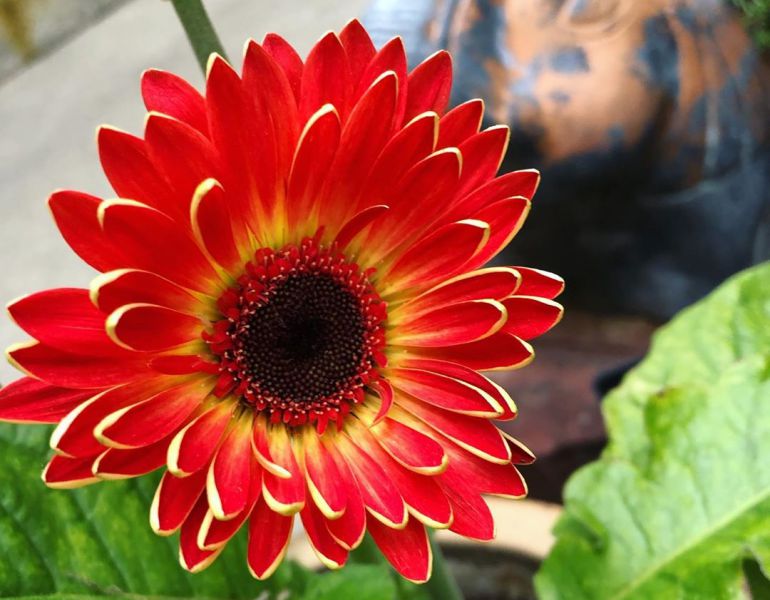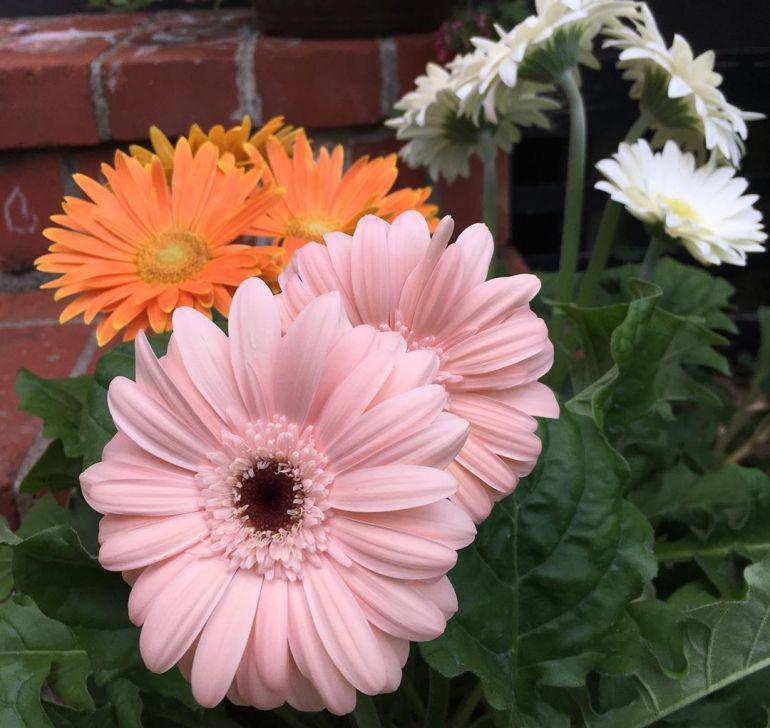The answer to whether or not a gerbera daisy is an annual or perennial is not necessarily a straight forward question like it is with some other flowers.
A more correct term would be to call gerbera daisies a ‘tender perennial’ flower. This basically means that in southern areas that have little to no frost the gerbera daisy is a perennial, while further north where the snow can get a few feet deep thick, if not more, this plant is an annual in that it will die without growing back again the next year.
Originally from Africa, this plant is meant to be a perennial and is classified as such but cannot live until the next spring if the temperature drops too low for too long. Sometimes referred to as an African Daisy, the flowers rank as the fifth most popular cut flower in the world just below roses, carnations, chrysanthemums, and tulips.

Red Gerbera Daisy

Colorful Gerbera Daisies
It comes in a wide variety of colors and sizes, some flowers even being tri-color, and different varieties can bloom from spring all the way through fall.
How to care for gerbera daisies as annuals
If you live in the north, caring for your gerbera daisy just as you would for any other annual flower will work just fine. It is best to pinch the spent flowers when they start to wilt on the plant. This helps keep the plant focused on producing more blooms longer.
However, if you are growing an annual gerbera daisy, you might want to let one or two of the flowers go all the way to seed late in the season. This way you can plant those seeds next year instead of having to buy new seeds every year.
How to care for gerbera daisies as perennials
Gerbera daisies grow long taproots if given the opportunity and therefore do not like to be dug up and transplanted. If you live where it is warm, it is safe to plant gerbera daisies outside with perhaps a row cover which will help to protect it during the coldest part of winter. In spring you can even divide the roots up if you want more plants of the same color.
However, if you do not live in a warm area, then it is much easier and better for your plant to stay in a pot. If you wish to put gerbera daisies in your garden beds, the simplest solution is to dig a hole and put the whole pot in the hole. Then when winter starts to come, and the weather turns cold; you can simply pull up the pot and place it in your garage or house where your plant can stay warm until spring.
Gerbera daisy problems and what to do for them
One of the things that gerbera daisies are the most susceptible to is crown rot. This is caused by too much moisture or inadequate drainage near the plant and results in fewer flowers as the crown rots, and the leaves start to wilt from the base, seemingly turning to mush. To help avoid this, as well as avoid causing mildew on the leaves, try to water the plant away from its base and not to get any part of the plant wet.
If the plants get cold in the winter, the leaves will turn yellow and eventually turn brown and mushy as the top dies. If the temperature does not stay too cold for too long, the plant can grow back again from the roots even if the top completely dies. Yellowing leaves can also be a sign of too little nutrients, iron in particular, or an unsuitable pH, so fertilize you plant regularly throughout the year to help give it what it needs to bloom.
Gerbera daisies need plenty of sunlight, or they will get long and leggy looking. Also, you should watch out for leaf miners and caterpillars on your outdoor plants. You can physically pull off any caterpillars off of the daisy plant and remove any leaves that are infected with leaf miners, but if there are more than a few, or if your plant seems to be infested with them, then it is best to spray your plant with something to kill the pests. Do this early in the morning, so your plant can dry without the moisture staying on its leaves too long.
Another tip to keep your gerbera daisy healthy is to make sure that it is not crowded. This is especially true if you live in a humid area. Make sure that your plant has plenty of circulation and even prune some of the leaves that might be growing in a thick clump all together. Proper circulation will help keep your plant dry and healthy since it is prone to get fungus if it stays too moist.
- How to Get Rid of Wood Mites - September 24, 2020
- Can You Have Stained Doors With Painted Trim? - May 27, 2020
- Is Duct Tape Flammable? and Other Burning Questions About Duct Tape - April 2, 2020
